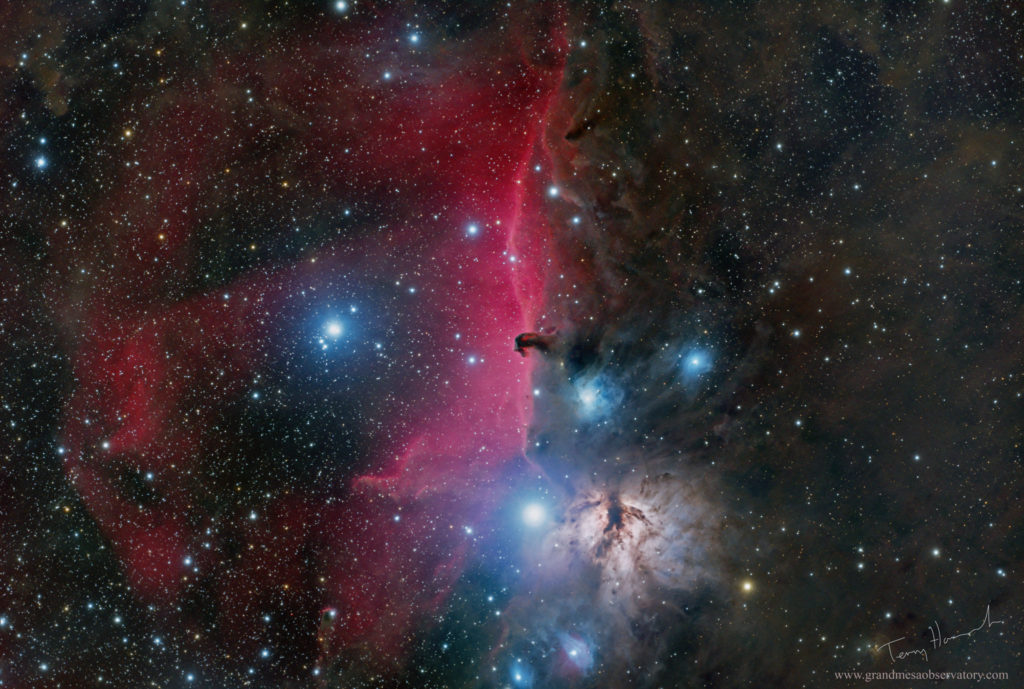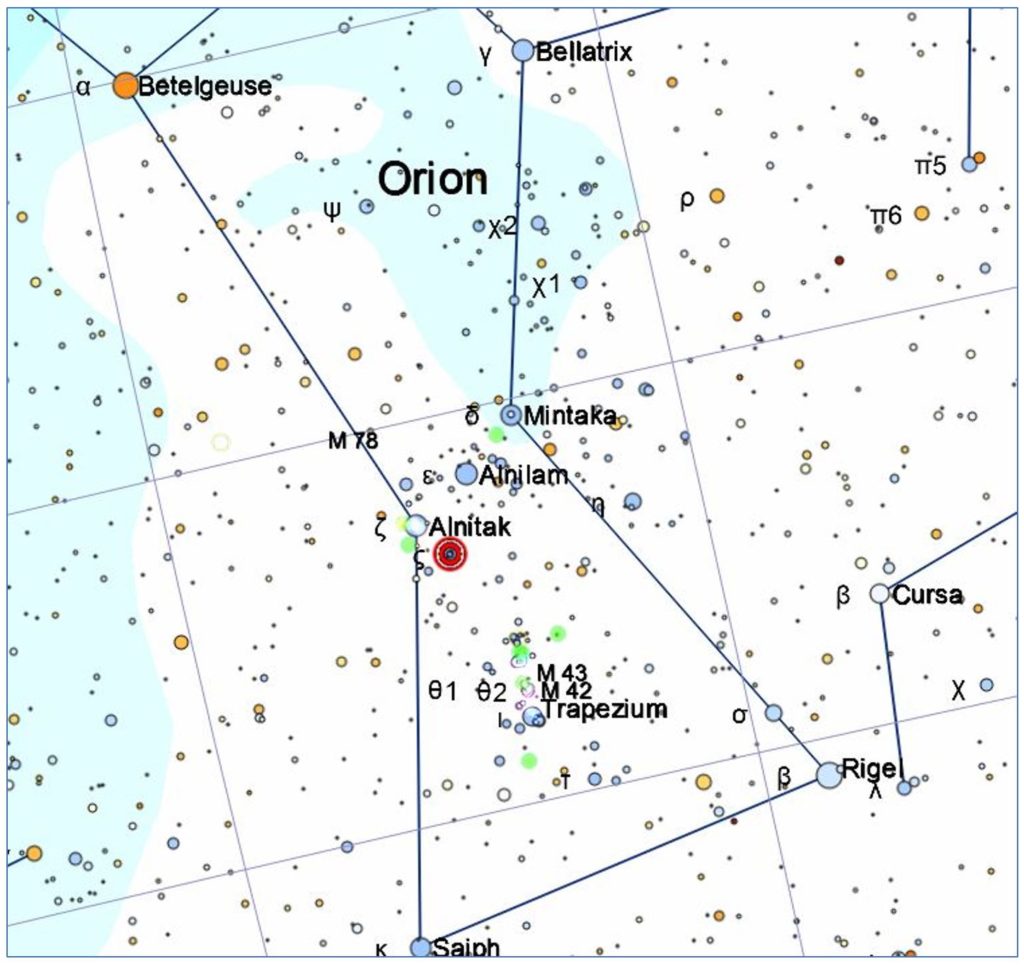
Perhaps the finest multiple star in the sky visible to both northern and southern observers, Sigma Orionis is a gravitationally-bound system of five stars, four of which are visible upon careful inspection with a small telescope. The brightest star of this group is one of the most luminous known, and it lights up the gas and dust around the famous Horsehead Nebula near Orion’s Belt. The star will one day expire, like many stars in Orion, in a spectacular supernova explosion.
Sigma Orionis doesn’t have an easy-to-remember name, but it’s not hard to find. It’s just south of Alnitak, the easternmost star in Orion’s Belt. The total visual magnitude is 3.6, so it’s visible even in light-polluted city skies.
What looks like one star to the naked eye is actually five stars labeled by astronomers as A to E. At an apparent magnitude of 4, A and B are the brightest and lie so close together they appear like a single star in even the largest telescope. But in a backyard scope at 100-150x, you’ll easily resolve the C, D, and E components. Star C is the faintest, at magnitude 9, and about 11″ (arc-seconds) from the primary. D and E are brighter at 7th magnitude and are about 12″ and 42″ from the AB combination. You can see the whole bunch in a 4-inch or larger telescope at 100x.
The tightly-spaced A and B components are each tremendously massive and bright: more than 35,000 and 30,000 times brighter than our Sun, and with a total mass of almost 35 Suns. The A/B pair are only 90 astronomical units (AU) apart, a little more than twice the Sun-Pluto distance, and orbit each other every 170 years.
Component C of Sigma Orionis is some 3900 AU away from the A/B pair, and D and E are 4600 and 15,000 AU (about 1/4 light year) away from the main A/B components. Because of their tenuous gravitational association with their more massive siblings, the C, D, and E components of Sigma Orionis will eventually leave the orbit of A/B and travel the galaxy as lone stars.
The Sigma Orionis system is some 1,150 light-years away from the Sun.
The ultraviolet light from A/B excite surrounding gas and dust clouds. A and B will end their lives as spectacular supernova explosions, while the smaller C, D, and E components will end their lives as white dwarfs after briefly expelling their atmospheres as planetary nebulae.
Component E is a strange star, with a strong magnetic field and strange helium-rich patches in its atmosphere.

As an observing bonus, don’t forget to look just northwest of Sigma Orionis with your telescope to see the triple star system Struve 761. Depending on your optics, you might see this system within the same field of view as Sigma Orionis. The triple is widely split, and all three 8th-magnitude components are visible in a small telescope.
Sigma Orionis, Struve 761, the stars of Orion’s belt, and the stars forming in the Orion Nebula are all part of the magnificent Orion OB1 association, a recently-formed aggregation of gas, dust, and new stars that’s only now starting to disperse into the Orion arm of the Milky Way.

This region of Orion’s belt is an astrophotographer’s dream. Within the same field as Sigma Orionis lies the Horsehead and Flame Nebulae along with other beautiful emission and reflection nebulae (see image at top). A visual observer will only see stars in this region of the sky, although you may see glimpses of the Flame Nebula and, if you have a big telescope, pitch-black sky, and an H-Beta filter, a hint of the Horsehead Nebula itself.
Share This: